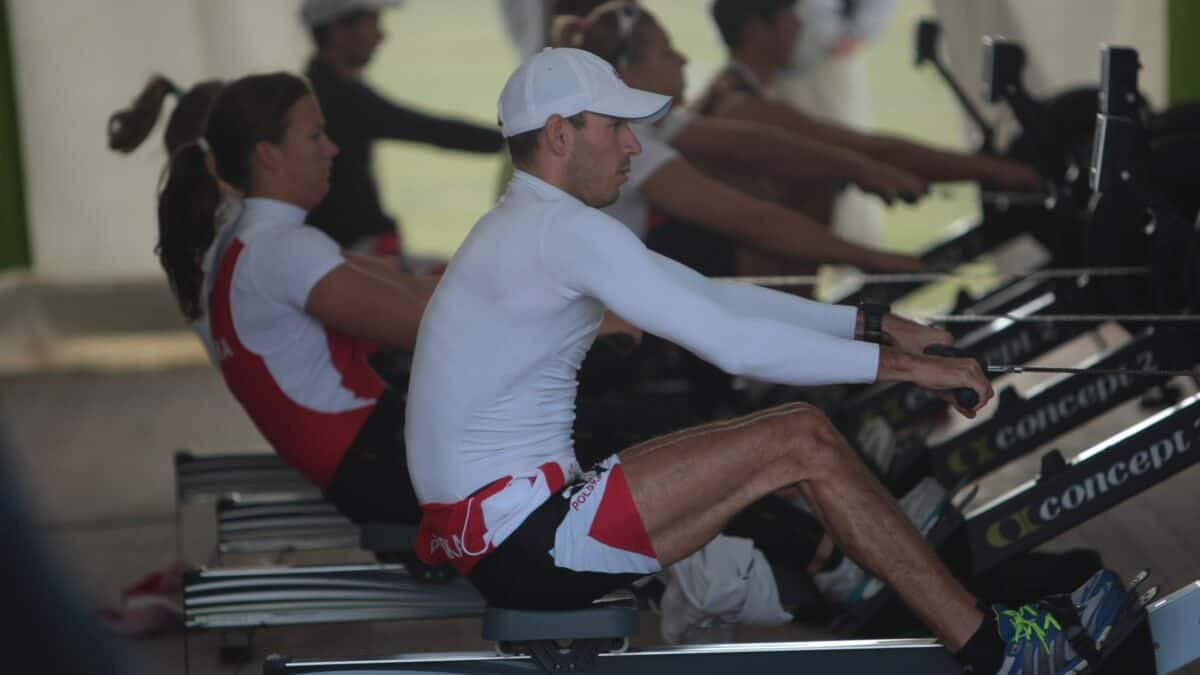
29 Dec 2015
Is blood flow to the brain different in rowers?
Popular perceptions aside, rowers – like most athletes – do want to believe that there is something special about their sport. New research suggests that there may be something special about rowing. The blood flow to the brain during rowing could in fact be different to that of other sports.
The study in question examined blood flow changes in the brains of rowers at Otago University in New Zealand performing 2000m ergometer tests, to see if that might explain why performance is better later in the day. Much to the surprise of the authors, they observed an unexpectedly high level of brain blood flow that lasted longer during anaerobic exertion than what has been observed in studies of other athletes.
Olivia Faull, lead author of the paper that was published last year in the Scandinavian Journal of Medicine & Science in Sports, explains that as exercise intensity goes up, so does brain blood flow. After a certain point in most sports, however – around the lactate or anaerobic threshold when the athlete begins to breathe at a much faster rate – blood flow to the brain levels off and begins to fall as exertion continues.
“This increased ventilation occurs in order to blow off excess carbon dioxide (CO2), to help reduce the acidic effects of lactate (La) and hydrogen ions (H+) being produced by the anaerobic energy system,” says Faull. [Learn more about how La and H+ contribute to pain and fatigue here: http://www.worldrowing.com/news/why-rowing-hurts-facing-fatigue-and-lactic-acid ]
Blood flow is directed towards the working muscles during any exertion and this, coupled with the levelling off of C02 due to faster breathing, leads to constriction of the brain’s blood vessels. “C02 is a vasodilator (makes blood vessels wider),” Faull says, “and a drop in CO2 causes vessels to shrink slightly (vasoconstriction).”
This is where rowers seem to be different. Faull and her colleagues found that when rowers reached the anaerobic threshold, the brain’s blood flow levelled off, but remained consistently high rather than dropping as exertion continued. “We suspect that the full body [muscular] contraction of the rowing motion helps maintain blood pressure and flow to the brain,” says Faull.
Why is this important?
Although she cautions against making the assumption that rowers have tougher brains than other athletes, Faull does say that “it is an interesting finding because it is so different from other sports and there is no consensus yet for what this means for athletic performance and brain adaptations.”
The study looked at highly trained and competitive university athletes and researches have yet to look at rowers just starting out. “We haven’t investigated this yet,” says Faull. “I suspect there is a level of expertise required for this to happen though, if it is the intensity of the rowing stroke which is pushing blood up to the brain.”
Although more research is needed, there may also be a warning to take from this new information. “If the mechanical loading of blood pushing through the brain is a contributing factor to this elevated brain blood flow in rowers,” cautions Faull, “it is possible that people who have damaged blood vessels due to things like aneurysms, vascular disease, and possible post-concussion syndrome may be at risk of further damage and dangerous consequences.”
Performance gains
Although the unusual blood flow results were completely unexpected, the study did confirm at least one long-observed phenomenon, that performance is actually better later in the day. The results actually showed an average improvement of 3.4 seconds over 2000m ergo testing in the afternoon relative to the morning.
This performance boost is linked to the body’s natural circadian rhythm that dictates the recurring pattern of physiological changes within us all throughout the day. “We definitely expected that performance would be better in the afternoon,” says Faull, “but we weren’t sure of the role of large scale blood flow dynamics in the brain.”
There is some evidence from other research that blood flow to the brain does increase in the afternoon. “We hypothesized that this might be coupled to increased endurance performance in the afternoon,” explains Faull. Interestingly, brain blood flow appeared consistent between the morning and the afternoon.
“The brain may allow an athlete to push themselves harder in the afternoon for the same brain blood flow,” says Faull.
There is still much research to be done in this field, concludes Faull. “We need to dig a bit deeper to see how the different areas of the brain are interpreting the signals sent back from the muscles in the morning and afternoon, which will require further investigations.”

